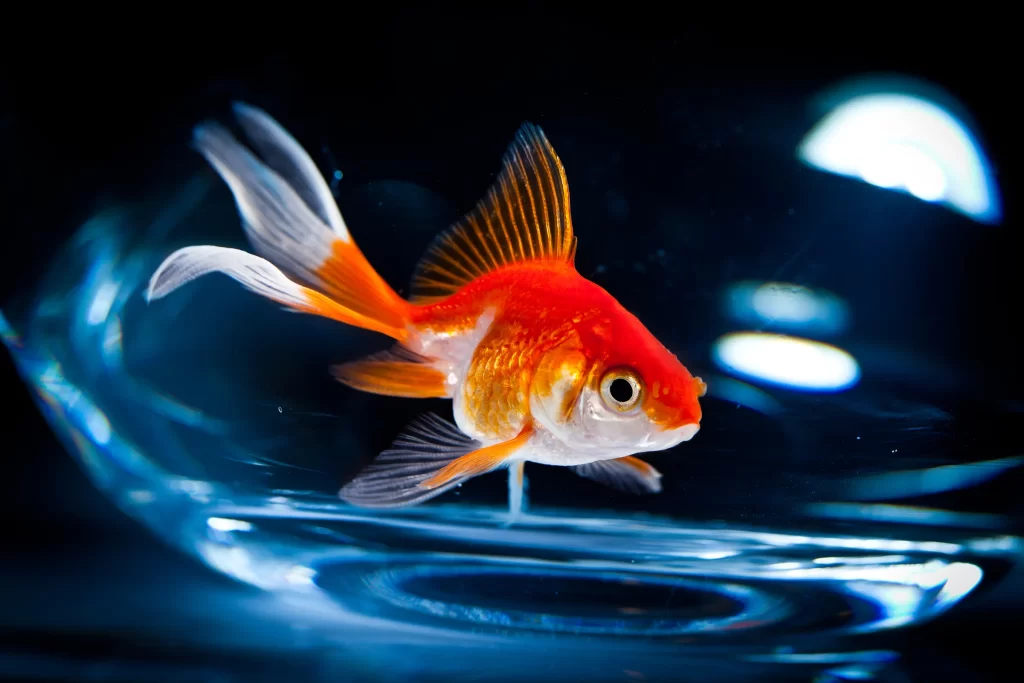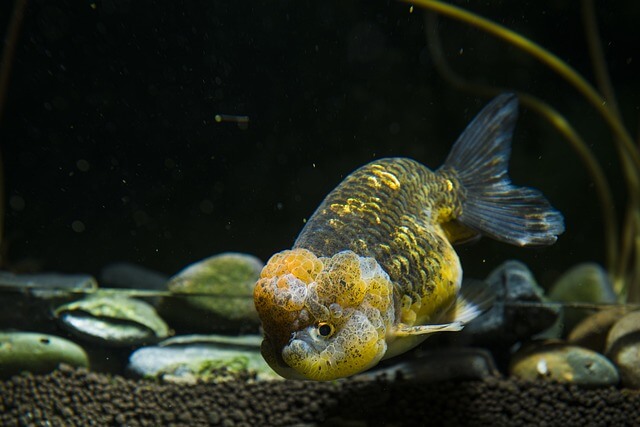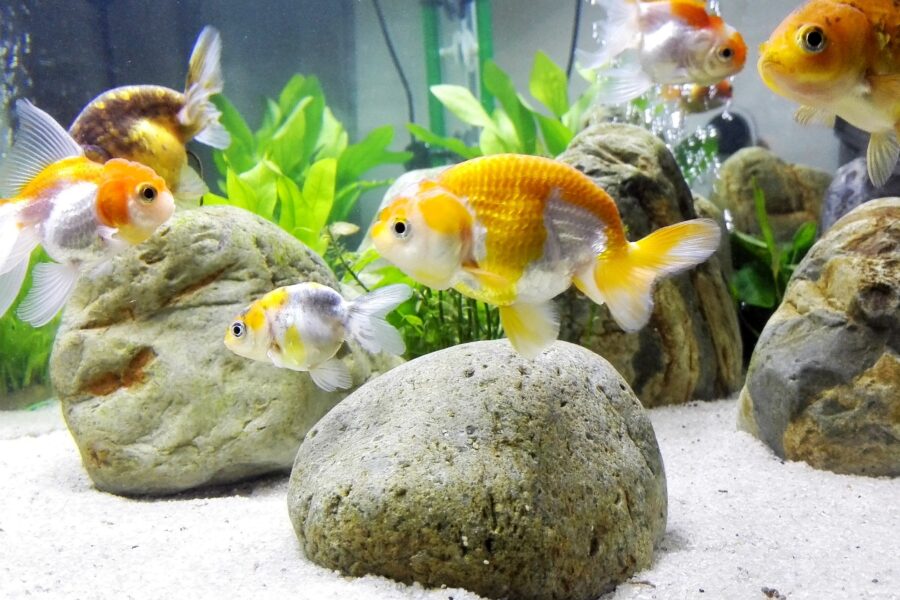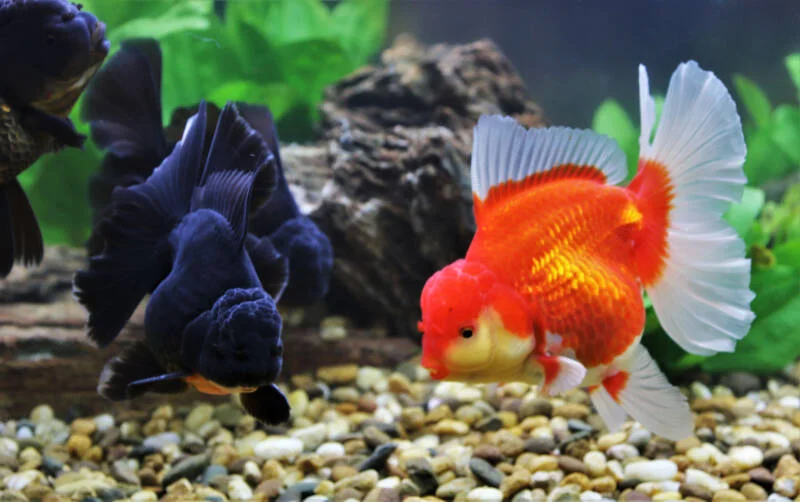
Picture this: a microscopic monster threatening the delicate balance of our precious marine ecosystem. Yep, we’re talking about the velvet parasite. Unseen to the naked eye, it exerts a spooky influence under the sea.
Moving from the high tides to your home aquarium, this parasite can play havoc with your scaly friend’s health. Goldfish, innocent victims of this invisible enemy, fall prey with a startling frequency. Spotting the enemy becomes critical, and that’s exactly where we’ll start.
Understanding the Velvet Parasite

Before rolling up our sleeves to fight unseen enemies in our beloved goldfish’s tank, it’s critical to understand the foe. Yes, the velvet parasite!
What is a Velvet Parasite?
In the wild landscapes of our aquariums lurk tiny yet troublesome villains. Meet Oodinium, the velvet parasite, say it like you’d address Captain Hook. These minuscule monsters usually adorn a golden-brown hue, hence the fancy name ‘Velvet.’ They’re not as dainty as they sound though – their mission? To cause an itchy frenzy among our fishy friends.
How Does it Influence the Marine Ecosystem?
Now that you’ve been introduced, let’s examine their modus operandi. Instead of a pirate ship, these parasites sail on the gentle currents of aquarium water, searching for a host. When they find one, the party begins. They anchor themselves on our poor goldfish, causing an array of complications. Like a domino effect, an infested tank could lead to marine Armageddon – the more the merrier doesn’t apply here!
As we dive deeper into this oceanic mayhem, we’ll unravel tell-tale signs of an infection, its impact on our finned comrades, and ways to show these parasites the way out. So, buckle up for some fishy detective work in the next section!
Symptoms of Velvet Parasite

Imagine this: you’re a top-drawer detective, and your skills are needed in the aquatic realm. The nemesis, Velvet Parasite, is under the radar. But fear not! With your detective skills and my guidance, we’ll peel back the mysterious veil of this villain.
How to Identify a Goldfish Infected by the Velvet Parasite?
A velvet-infected goldfish won’t slyly sip martinis in a corner, whispering, “Shaken, not stirred.” They have simpler, yet noticeable telltales. An infected goldfish may exhibit symptoms like a loss of appetite, decreased energy, and no, it’s not sulking because of an unrequited love, it’s the parasite! These fishy fellows may also rub against objects in the tank, almost like they are trying to scratch an annoying itch.
Common Signs and Symptoms of Infection
Ah, you want more clues to the unraveling plot? This dastardly parasite leaves more signs behind. In addition to the desperate attempt to scratch themselves, a sick goldfish may have a clamped fin. Pearlescent, dusty-looking patches that make your goldfish look like it’s been performing at the fish version of a Midsummer Night’s Dream, aka velvet dust, may also appear. And not to alarm anyone, but rapid gill movement and gasping at the surface is also a textbook indication of a velvet attack.
So, we’ve learned how to spot an infected goldfish like a pro. As we delve into the next section, we’ll run face-first into the unexpectedly glamorous lifecycle of this gill-gripping antagonist. But fret not, our journey won’t stop at merely understanding the enemy. We’ll strategy our way into defense plans to help your goldfish emerge victorious in the face of this tiny terror. Don’t break a fin just yet.
The Battle Front: Effects of Velvet Parasites on Goldfish

Ready to dive deep, Sherlock Holmes style, into the world of velvet parasites? We’re about to journey into their life cycle in a goldfish. Understanding this is crucial, it’s like knowing your enemy tactics before going into the war zone. So, roll your sleeves up, and shall we?
Understanding the Lifecycle of a Velvet Parasite in a Goldfish
Ever wondered how the velvet parasite fetches up in your goldfish’s life? Well, it ain’t an accident. The parasite starts its life as a pearly grain stuck on your fish’s body. Then, it transforms into a parasite pinching into your goldfish’s skin. From there, it saps the energy, causing genuine harm and discomfort. You usually only know it’s there when things get grim.
Effects of Velvet Parasite Infection on Goldfish Health
Is your goldfish doing the flamenco instead of elegantly gliding through the water? A pirouetting goldfish might indeed seem like an underwater talent show. But, let’s get real; this dance-off is often the first sign of a velvet parasite infection. Other signs include reduced appetite, changes in color, and slowed activity. If untreated, it can lead to severe health issues, even death. The consequences are as grave as not leaving chocolate within arm’s reach on cheat days.
Now that we’ve unearthed what really goes down in the belly of the beast (or the gills of the goldfish), up next is how we fight back. Armed with the knowledge of what we’re up against, let’s explore ways to counter-attack. We’re like the Avengers, but for fish. Get ready to go into beast (or fish) mode in the next chapter.
Counter-Attacking: Fighting the Velvet Parasite

If you’ve ever declared war on dust bunnies under your bed, or engaged in a fierce battle with a stubborn jar lid, you’ll appreciate the struggle goldfish face against velvet parasites. These pesky little invaders can be quite a nuisance, but fortunately, our aquatic buddies aren’t left defenseless. Let’s dive right into the list of treatments and preventive measures to arm your goldfish against this microscopic enemy.
Treatments Available for Velvet Parasite Infection
Addressing velvet disease in goldfish necessitates a precise and targeted approach. Key treatments include:
- Copper-based medications: These are often the first line of defense. The ionic properties of copper target the parasites without causing significant harm to the goldfish when used correctly. Always follow the recommended dosage and observe the fish for any signs of distress.
- Anti-parasitic fish food: Incorporating medicated fish food can tackle the parasite internally. This ensures the parasite is attacked both from the environment and inside the fish’s system.
It’s vital to understand that merely treating the infected fish is not sufficient. The entire aquarium environment, including water, substrate, and ornaments, should be treated to eradicate the parasite fully. Think of it as ensuring a sanitized environment; leaving any remnants can lead to a reinfestation.
Preventive Measures to Avoid Infection
Prevention, my watery chums, is always better than cure. Maintain your fish tank like a spick-and-span submarine to keep parasites from docking in. Regular water changes, keeping your tank well aerated, and avoiding overcrowding can create an unfavorable environment for velvet parasites. An extra tip here – always quarantine new additions before introducing them to your tank, because you never know what unwanted guests they might be harbouring onboard!
Now you know how to counter-attack and outsmart velvet parasites. But the war isn’t over yet, goldfish parents. In our next section, we’ll discuss how to bolster your goldfish’s immunity and create a fortress-like habitat to shield them from any future parasitic invasions. Buckle up; it’s time to armor up, commando!
Armoring Up: Boosting Goldfish Health Against Parasites

Rome wasn’t built in a day, they say, and neither is the immunity of your goldfish! Assuming the role of a knight, let’s explore how can we armor up our swimming comrades against these villainous parasites, shall we?
Feeding and Care Tips to Bolster Goldfish Immunity
One of the best ways to armor our goldish against parasites is by maintaining optimal health. How do we do that? Through feeding and proper care, if you’re wondering!
It’s like that splendid breakfast you have – a nourished goldfish is a happy goldfish. Feed them a balanced diet consisting of flake food, pellets, live food, and plant matter. But remember, don’t overfeed them as it could lead to complications.
Additionally, regular care involves routine cleaning of the tank or pond. After all, cleanliness is next to Goldfish-ness. Oh, and warm your fishes – literally! Keep the water temperature warm, assisting in their metabolic processes.
Now that we are feeding our goldfish right and taking utmost care, let’s dive in to play some “house-house”.
Role of a Healthy Habitat in Preventing Parasitic Infection
Imagine having to stay in a dirty, cluttered room. Isn’t it a nightmare? Similarly, an unhealthy ecosystem can make goldfish more susceptible to infections like the Velvet Parasite.
A healthy habitat includes ensuring the right temperature, proper filtration system, and a balanced pH level of water. Furthermore, introducing some friendly tank mates can do wonders! Not only will they cheer up your goldfish but also, they can aid in controlling parasite population.
To Sum Up
The velvet parasite, a dreaded yet fascinating microorganism, has significant impact on the marine ecosystem. Recognizing the signs of infection, particularly in our unsuspecting goldfish, can help us identify this foe early.
Understanding the intricacies of this parasite, especially its lifecycle and its effect on our aquatic pets’ health, is the key to effective counter-attack. Armed with effective treatment options and preventive measures, we can protect our goldfish from this invisible adversary. Even more, by boosting our goldfish’s health through proper feeding and care, along with creating a healthy habitat, we can help them become resistant to such infections. The battle against the velvet parasite may be gritty, but knowing our enemy is half the battle won.
Frequently Asked Questions (FAQ)
Question: What is the Velvet Parasite?
Answer: The Velvet Parasite, also known as Piscinoodinium or Gold Dust Disease, is a tiny, parasitic organism that commonly infests fish, like goldfish. It can seriously affect the health and well-being of your aquatic pet.
Question: How can I identify a goldfish infected by the Velvet Parasite?
Answer: Infected fish often exhibit physical and behavioral changes like loss of appetite, rapid breathing, lethargic movement, clamped fins, and a rusty, gold dust coating on their skin, especially under certain lighting conditions.
Question: What are the effects of Velvet Parasites on Goldfish health?
Answer: In severe cases, Velvet Parasite infection can lead to respiratory failure, skin damage, inflammation, and even death in goldfish.
Question: Are there specific treatments for a Velvet Parasite infection?
Answer: Yes, treatments can include antibiotics, water treatments, and other medicinal interventions prescribed by a vet. It could also involve raising the water temperature slightly to speed up the parasite’s life cycle.
Question: How can I prevent my goldfish from contracting the Velvet Parasite?
Answer: Prevention measures can involve regular tank maintenance, feeding a healthy diet, quarantining new fish, and avoiding overstocking your aquarium.
Question: What role does a healthy habitat play in preventing parasitic infection?
Answer: A clean, well-maintained aquarium with the right water temperature and pH levels can greatly reduce the occurrence of parasitic infections like the Velvet Parasite. It’s all about creating an environment where your fish can thrive, and parasites struggle.
Question: How can post-infection care help my goldfish recover?
Answer: Post-care usually involves ongoing medication to clear the parasite completely, along with regular health checks. Making your goldfish’s environment stress-free and nutrition-focused aids in recovery.



